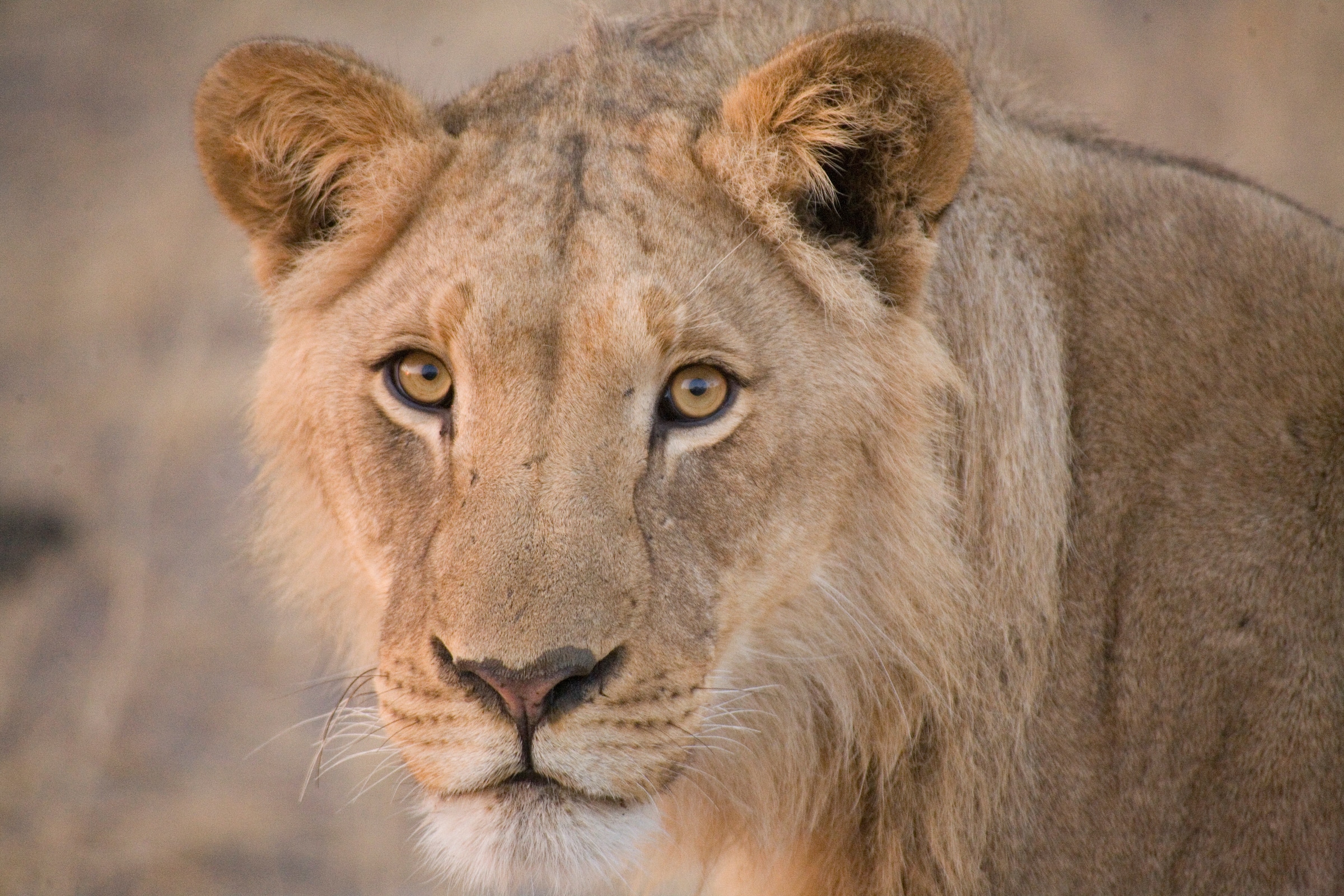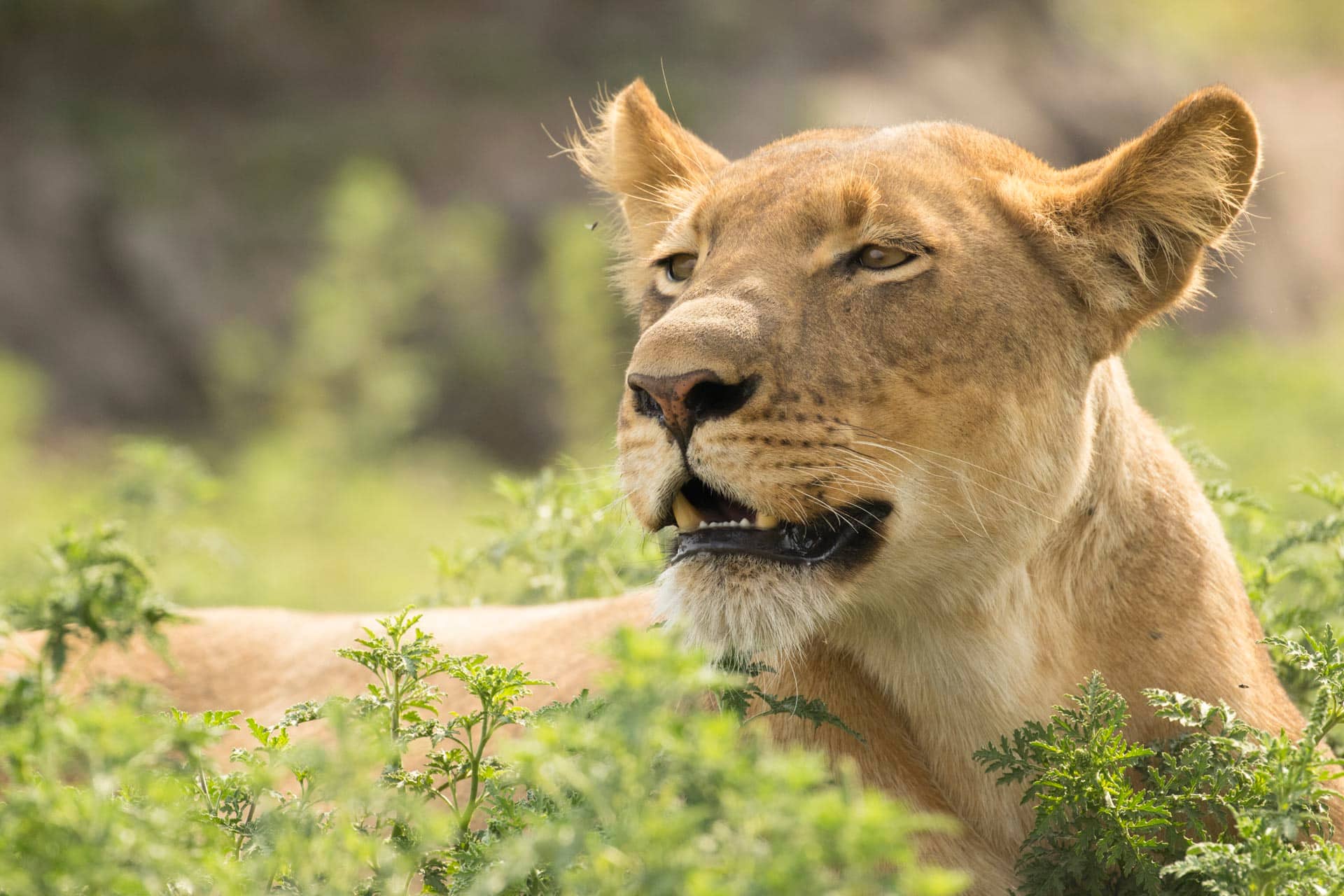Lions are known for many striking characteristics. Their yellow eyes, tawny coats, and the rugged manes of male lions are some prominent examples. While these characteristics can sometimes differentiate one lion from the next, there is one feature that can consistently be used to tell lions apart—their whiskers patterns!

Whiskers grow from small holes in a lion’s snout, and it’s these holes, not the whiskers themselves, that are distinctive for each lion. Lions have about four or five rows of whiskers, but it’s the two top rows that are unique for every lion. These rows act as their “fingerprint” that conservationists use to identify specific lions
The second-from-the-top row of whiskers is what’s known as the reference row or “complete” row, since it has more holes than the top row, which is known as the identification or “incomplete” row. These whisker holes in the identification row form a pattern, which is determined by the distances between each whisker hole. A lion’s face will have different whisker patterns on both sides!

Whisker patterns give conservationists the ability to carry out surveys of lion populations. Conservationists can build a database on individual lions based on close up photographs of their whisker patterns. Other methods of surveying individual lions within populations are not as reliable, especially when trying to analyze a lion population over time.
By recording these whisker holes and patterns, conservationists are better equipped to collect lion population data.

